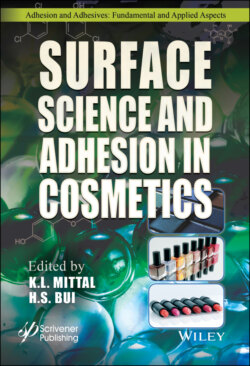Читать книгу Surface Science and Adhesion in Cosmetics - Группа авторов - Страница 18
1.3.1 Stability Testing of Lipstick Formulations
ОглавлениеIt is important to note that the priority in lipstick development is product stability. Not only does stability impact product performance, but it can also directly influence consumer perception of the brand. Stability testing is typically conducted for different time periods at varying temperatures at which samples are observed. Common observations may include lipstick sweating, in which the oil within the formulation forms visible droplets on the exterior of the formulation, in addition to discoloration, crystallization, separation, or cracking. A Design of Experiment can be utilized during lipstick formulation stages in order to identify the best optimized formulation that passes stability testing. Currently, there is no in vitro method to predict a formulation performance in regards to stability. Therefore, utilizing a Design of Experiment is the best way to identify the optimal formulation within a particular batch.
Stability testing is conducted by placing formulation samples in a controlled environment for a specified period of time in order to relate to shelf-life and consumer environments in which the finished product may be stored. This indicates what effects different temperatures and humidity levels might have on the product following a certain time frame. Initial stability tests are carried out in a 25°C chamber and samples are observed for signs of degradation or separation at particular time points [54]. According to a patent issued to L’Oreal, inspections for this initial stability testing are done at 24 hours, 3 days, 1 week, 2 weeks, 4 weeks, and 8 weeks, and the sample is observed for phase separation, bending, sweating, and other physical conditions [54]. Once a formulation passes this stage, a second stability test is conducted for 8 weeks in varying temperature chambers in addition to a freeze-thaw condition. Such temperatures disclosed in a patent issued to L’Oreal include 37°C, 40°C, 45°C, and 50°C [54].
Stability testing of long-wear lipstick formulations is especially important due its volatile solvent component. Isododecane, which has a flashpoint of 45°C, constitutes nearly half of the volatile solvents in both the liquid and stick forms of long-wear lipstick. Therefore, the stability readout at 45°C is crucial in identifying and optimizing potential formulations. In the liquid format, should the volatile solvent flash off and fail stability, there would be an increase in viscosity; meanwhile, the stick would become dry. The packaging design and seal of such formulations is also tested through stability to help identify any loss of volatile solvent over time. Should a formulation pass these stability tests, further formulation characterization will be conducted through the use of in vitro test methods and consumer studies.
